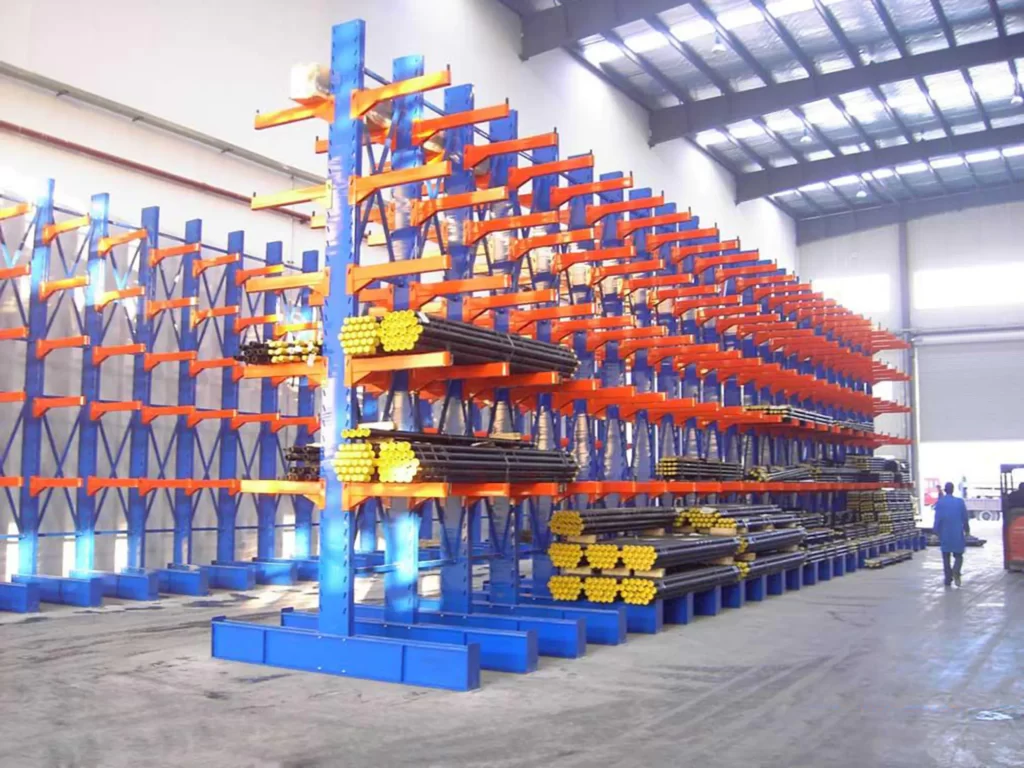Push back racking, also called press-in racking, is an evolution of pallet racking. Adopting the working principle of combining track and pallet trolley, the track is at a certain slope (about 3°), when stocking, the goods are placed on the track trolley together with the pallet, fork the goods of other pallets with the forklift, and then push forward to squeeze the previous group of trolley with goods to reach the designated storage position; when picking up the goods, due to the self-weight of the goods, the trolley will carry the goods one after another and slide slowly along the track to the pick-up port for warehouse staff to pick up.

The push back rack is an advanced storage method, which is suitable for storing large quantities of goods with few varieties (such as cold storage), with high space utilization and more flexible and convenient access. The total depth of push back racking should not be too deep, the depth of the design is generally within 6 pallets, otherwise, the space will be sacrificed due to the mutual embedding of pallet trolleys. The weight of single pallet goods of push back racking is generally within 1500kg, and the height of racking is generally below 6m.
push back racking system requires high manufacturing accuracy of racking, and the cooperation between pallet trolley and rail is especially important, if the manufacturing or installation accuracy is not high enough, it will easily lead to poor operation of the racking system. The cost of this type of racking is slightly higher than that of drive-in racking, and it is very suitable for cold storage or storage areas with limited storage areas, but needs to increase the storage area of the occasion. Press-in racking has been used in many applications in China, but only small-scale racking manufacturers can produce this type of racking.
Press-in racking is safer and more efficient than drive-in racking, and only requires a forklift or counterbalanced forklift to be used, and requires less forklift operation than drive-in racking. Compared with ordinary pallet racking, press-in racking can increase the utilization rate of the ground by about 60%.

Features of push back racking
1, Composed of typical structural parts such as pallet carts, the pallet carts have flowable characteristics, and the goods are provided to enter and exit at one end of the racking and follow the first-in, last-out sequence.
2, When storing and transporting goods, the forklift truck is only located at the lower level end of the racking aisle and does not need to enter the goods storage aisle of the racking. This type of racking has the typical high storage density and fast storage and transportation characteristics.
3, Usually used in occasions where storage space is minimal, but storage capacity must be increased or there is a time requirement for goods, etc. for goods picking is not very demanding.

Advantages of push back racking
1, When the number of pallets for a product is large and “first-in-first-out” is not required, it simplifies the work process and provides significant benefits.
2, It can shorten picking time and does not require special handling equipment.
3, Because of more storage area and fewer aisles, space utilization and productivity are very high.
4、It can avoid the cargo loss that often occurs in the loading and unloading operation of high-density storage racks.

Price of pushback racking
push back racking mainly consists of columns, beams, rails, and wheeled trolleys, so the main cost is also composed of these parts. Compared with pallet racking, push-back racking has a higher density and uses more materials, so the cost is also higher. The structure of push-back racking is similar to drive-in racking, so the approximate price can be referred to as the price of drive-in racking.

How to install push back racking
When installing push back racking, the first thing you should do is to install the racking column set; secondly, hang the beams on the corresponding holes of the columns and do a good job of anti-drop measures to ensure the overall stability of the racks; then it is time to install the track, and special attention should be paid to the inclination of the track installation to ensure the accuracy of the practical design and installation to ensure that the trolley glides safely and smoothly on the track. The installation of push-back racks is more complex and should be installed by professional rack installers. After the installation is completed, cargo access tests should be conducted to ensure that customers can safely and efficiently use the racks.








